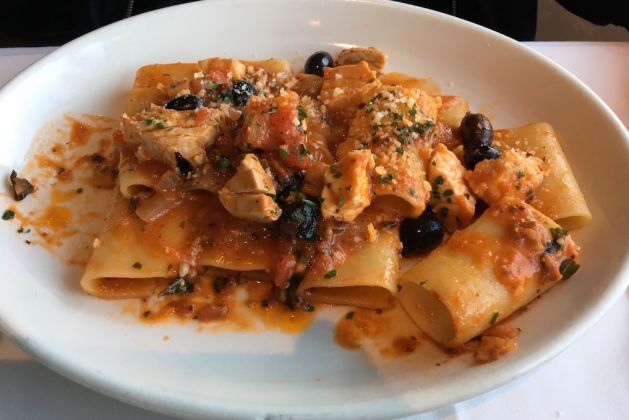Pasta: Popular mythology has Marco Polo bringing back egg noodles from his trip to China and calling them macaroni. Actually, a fresh pasta dish called lagana, an oven-baked precursor to lasagne, existed in ancient Roman times. But it wasn’t until the Arabs introduced durum wheat and semolina to medieval Sicily that dry pasta entered the Italian diet, making couscous, not chow mein, pasta’s closest relative.
Polenta: This yellow gruel has sustained northern Italians (and southern Italian jokes) ever since corn was introduced to the Po Valley from Mesoamerica during the age of exploration.Unfortunately, during lean times, many poor northerners consumed it almost exclusively, leading to widespread niacin deficiency, and a leprosy-like, potentially fatal condition called pellagra (from “pelle agra,” or “rough skin.”)
Risotto: Rice is another grain not native to Italy. It was probably introduced to the well-watered Po Valley during the early Renaissance by the Spaniards, who likely got it from the Arabs, via India, and prior to that, China. Why Italians favour rice that’s at once creamy and al dente, versus the individualized grains preferred in the Middle East and India, or the sticky rice of the Far East is anyone’s guess.
Pizza: Flat, baked dough as an “edible plate” to hold different ingredients has been enjoyed at least since ancient Roman times. But back then, it looked more like garnished focaccia, which may have been introduced by the Etruscans; another suspected forerunner is the Greek pita, which sounds a lot like pizza. Whatever the case, the only two pizzas recognized by the Associazione Verace Pizza Napoletana were popularized in 19th-century Naples, the first topped with marinara sauce, the second, in honour of a visit by Queen Margherita and the tricoloured Italian flag, with tomato sauce, mozzarella cheese and basil leaves.
Tomato sauce: No other ingredient is more closely associated to Italian cooking than the tomato. So, it seems odd that, for at least two centuries, this New World import was kept only as an ornamental plant – most Italians feared it was poisonous, as are most other members of the nightshade plant family. Odder still is that those first tomatoes were the yellow, cherry type, though this explains where the name pomodoro (“golden apple”) comes from. Tomato sauce doesn’t appear in an Italian cookbook until 1692, and even then, it’s described as a “Spanish-style sauce.” By the 19th century, the popularity of tomato-laced pasta and pizza had spread from the street vendors of Naples to the rest of Italy, and through immigration, to the rest of the world.
Gelato: Sweetened mountain ice or snow was all the rage in ancient Rome, and the Arabs refined the practice when they took over Sicily, developing the treat we know as sherbet or sorbet. It took until 1565 for the aptly named Bernardo Buontalenti, a chef in the Florentine court of Caterina de’ Medici, to invent gelato (which is not ice cream, since it’s made with milk). The Italian masses were gelato-deprived until the advent of electric refrigeration, in the early 20th century, but most Italians still insist on getting their fix from old-fashioned, artisanal gelaterie.
Espresso: This dark and potent drink has been keeping Italians up at night since the 1600s, when it made its debut in Venice, via the Middle East, North Africa, and originally, Ethiopia. Coffee making evolved from Turkish style boiled grounds to French press, percolator and drip processes, but all fell short of fully extracting the coffee bean’s essence. The breakthrough came in 1905, when Italian manufacturer Pavoni produced its first espresso machine, forever changing coffee culture, if also greatly multiplying Italians’ caffeine obsession.
Wine: Primitive winemaking emerged in present-day Georgia about 8000 years ago, and more advanced production spread to Greece a few millennia later. Greek colonists introduced viticulture to southern Italy, which the Romans spread throughout their empire. No vintages survive from that era, but they couldn’t have been very good if most had to be mixed with water to be palatable (7-Up wasn’t yet available). It took centuries of refinement to bring Italian wine to its present high standards, often exceeding French wine in terms of sales and market share.
Giancarlo La Giorgia is the author of the bestselling book Canadian War Heroes: Ten Profiles in Courage (2005). He has written on a variety of topics, including architecture, design, food, travel, health, science and popular culture.

